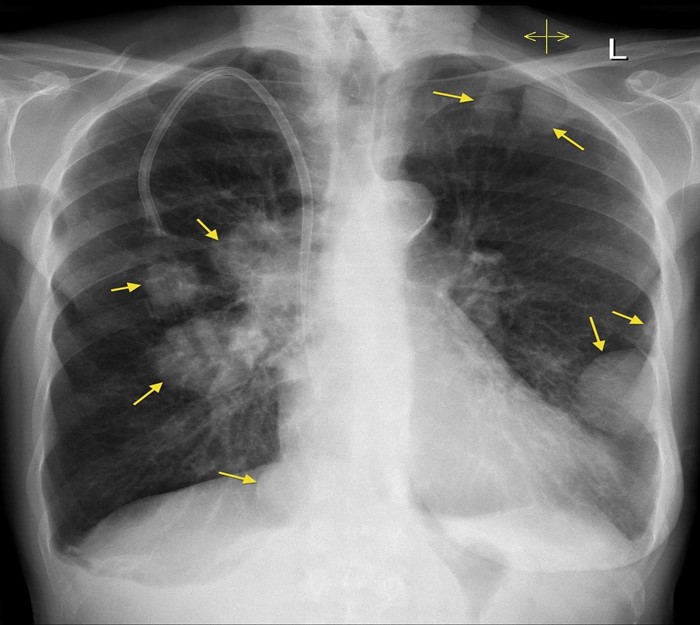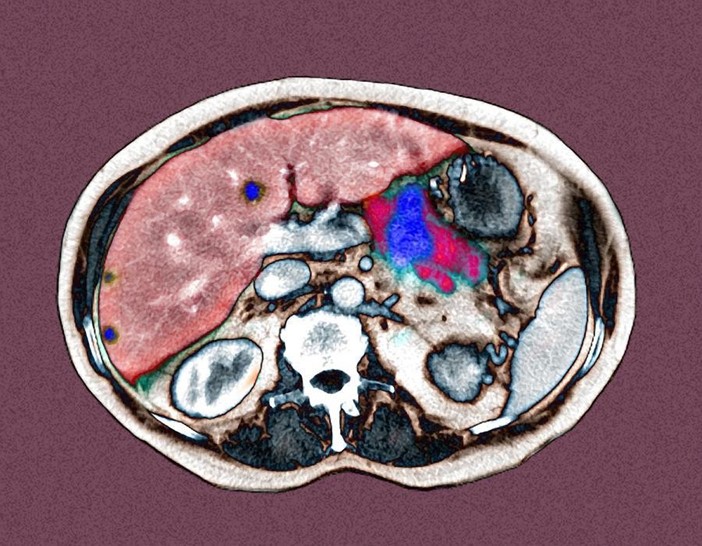A male client is admitted with difficulty breathing related to a recent diagnosis of metastatic lung cancer. He tells the nurse that he does not want to be hooked up to any machines. His vital signs are heart rate 120 beats/minute, blood pressure 98/50 mm Hg, respirations 30 breaths/minute, and oxygen saturation 88%. Which action should the nurse take?
Obtain the client's legal records for power of attorney.
Give analgesic medications as needed (PRN).
Discontinue the intravenous infusion.
Ask the palliative care team to speak with the client.
The Correct Answer is D
Choice A Reason: This is not the first priority because it does not address the client's immediate needs. The nurse should obtain the client's legal records for power of attorney, but this can be done later.
Choice B Reason: This is a good action because it helps relieve the client's pain and discomfort. The nurse should give analgesic medications as needed (PRN), but this is not enough to meet the client's holistic needs.
Choice C Reason: This is not an appropriate action because it may cause harm to the client. The nurse should not discontinue the intravenous infusion without a valid reason and a healthcare provider's order.
Choice D Reason: This is the best action because it respects the client's wishes and provides him with quality end-of-life care. The nurse should ask the palliative care team to speak with the client and offer him emotional, spiritual, and physical support.

Nursing Test Bank
Naxlex Comprehensive Predictor Exams
Related Questions
Correct Answer is B
Explanation
Choice A Reason: This is not the best action because it is a medication error that can be corrected and prevented by following the rights of medication administration. The nurse manager should counsel the staff nurse and provide education on safe medication practices.
Choice B Reason: This is the best action because it is a serious breach of professional ethics and standards. The nurse manager should report the staff nurse to the PRC for falsifying documentation and compromising client care.
Choice C Reason: This is not the best action because it is a mistake that can be rectified by removing the diet tray and notifying the healthcare provider. The nurse manager should reprimand the staff nurse and review the policy on NPO status.
Choice D Reason: This is not the best action because it is a minor issue that can be resolved by communicating with the charge nurse and other staff members. The nurse manager should remind the staff nurse of the importance of teamwork and collaboration.
Correct Answer is B
Explanation
Choice A Reason: Ensuring the transfer of the client's electronic chart code is not the most important action for the nurse to take first. The electronic chart code is a unique identifier that allows access to the client's health records and care plan. While this is an important task, it is not as urgent or essential as giving a detailed report to the accepting nurse, who will be responsible for providing palliative care to the client.
Choice B Reason: Giving a detailed report to the accepting nurse is the most important action for the nurse to take first. The report should include the client's diagnosis, prognosis, pain level, medication regimen, preferences, goals, and psychosocial needs. This will ensure continuity of care and facilitate a smooth transition for the client and the family.
Choice C Reason: Taking the family to the client's new room is not the most important action for the nurse to take first. The family may need emotional support and guidance during this difficult time, but they also need accurate and timely information about the client's condition and care plan. The nurse should first give a detailed report to the accepting nurse and then accompany the family to the new room.
Choice D Reason: Giving the client written information about end-of-life care is not the most important action for the nurse to take first. The client may benefit from learning more about palliative care, hospice care, advance directives, and bereavement services, but this should be done after giving a detailed report to the accepting nurse and ensuring that the client is comfortable and stable in the new room.

Whether you are a student looking to ace your exams or a practicing nurse seeking to enhance your expertise , our nursing education contents will empower you with the confidence and competence to make a difference in the lives of patients and become a respected leader in the healthcare field.
Visit Naxlex, invest in your future and unlock endless possibilities with our unparalleled nursing education contents today
Report Wrong Answer on the Current Question
Do you disagree with the answer? If yes, what is your expected answer? Explain.
Kindly be descriptive with the issue you are facing.
